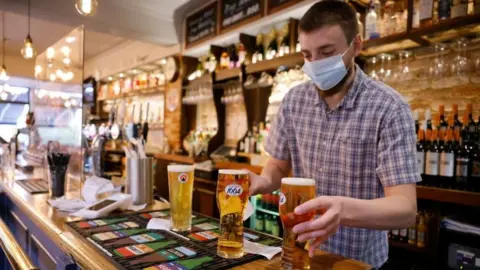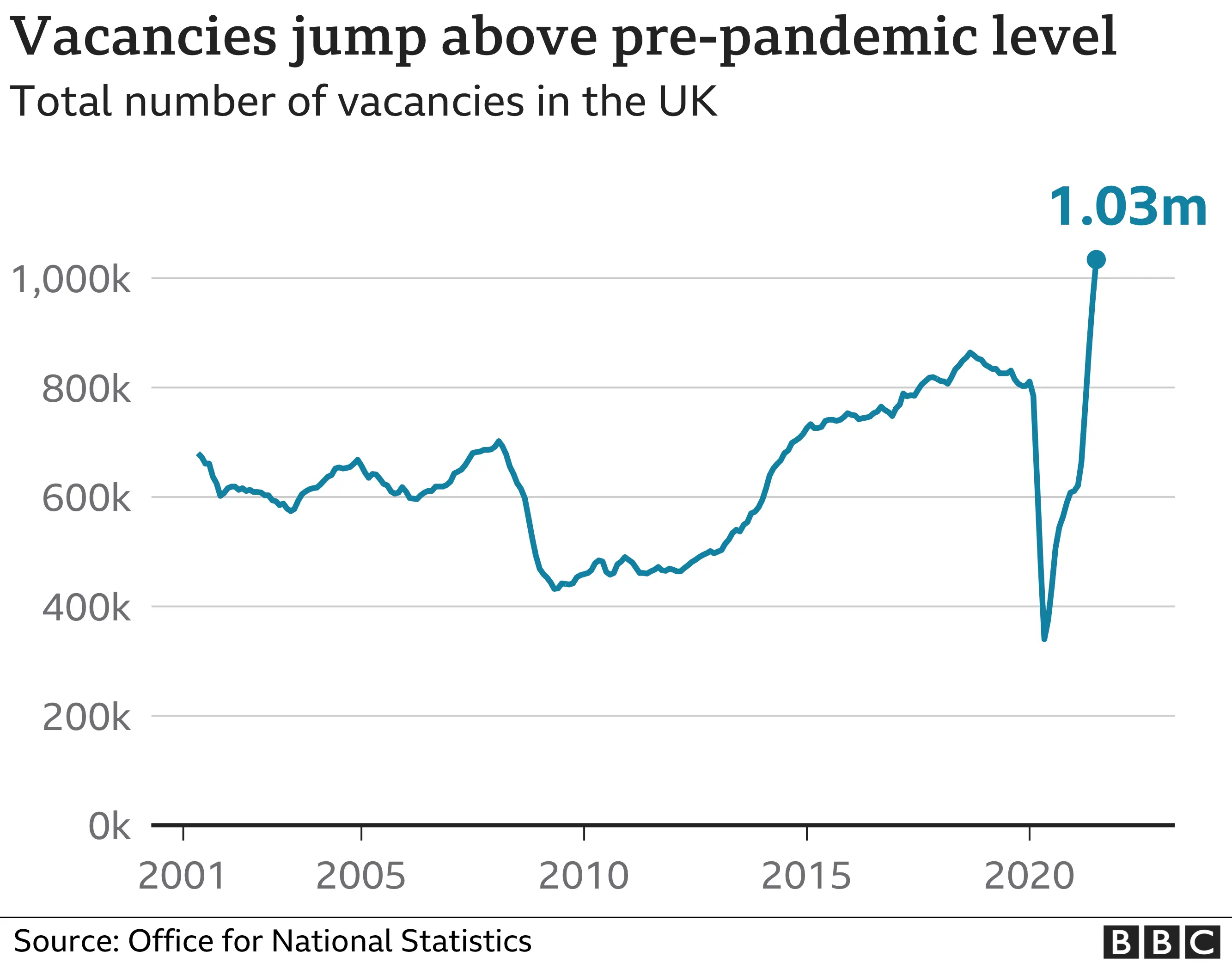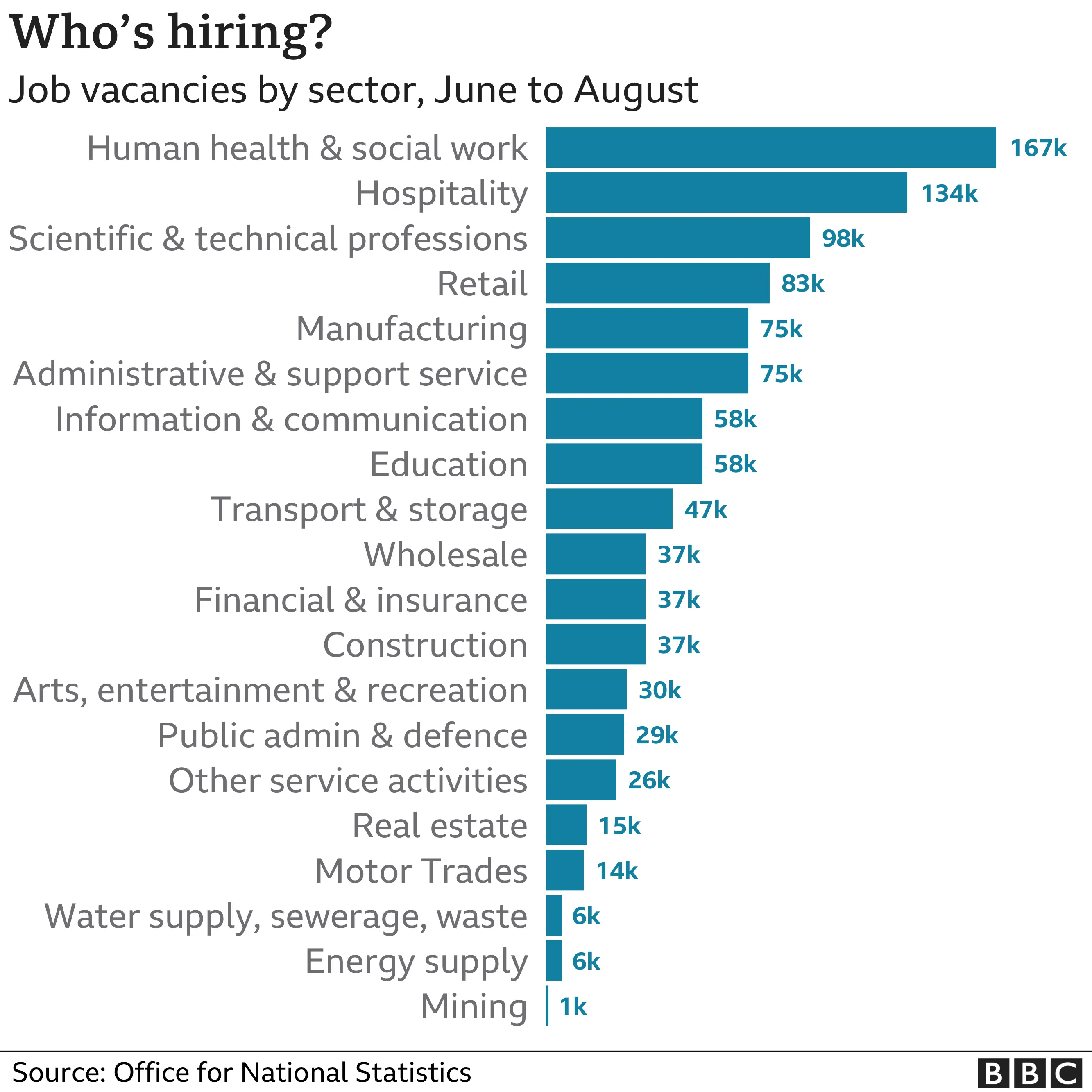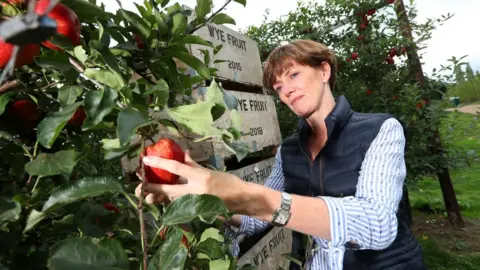Job vacancies surge past one million in new record
 Getty Images
Getty ImagesJob vacancies have hit a record high as the economic recovery continues, according to official figures.
The number of vacancies in the three months to August rose above one million for the first time since records began in 2001.
Figures also showed employee numbers were back at pre-Covid levels in August, the Office for National Statistics (ONS) said.
August payrolls showed another monthly increase of 241,000 to 29.1 million.
Business groups said, however, despite the return of staffing levels to pre-pandemic rates there remained high demand for more staff, and there was a risk labour shortages would dampen growth.
The ONS deputy statistician, Jonathan Athow, said: "Early estimates from payroll data suggest that in August the total number of employees is around the same level as before the pandemic, though our surveys show well over a million are still on furlough."

But Mr Athow pointed out that the recovery was not even, with areas such as London and sectors like hospitality and the arts still down.
The ONS also cautioned that young people had been badly affected by job losses.
"The overall employment rate continues to recover, particularly among groups such as young workers who were hard hit at the outset of the pandemic, while unemployment has fallen," he said.
Overall, the unemployment rate fell from 4.7% to 4.6% in the three months to July.
'Acute hiring crisis'
Suren Thiru, head of economics at the British Chambers of Commerce said, however, that firms were currently facing an "acute hiring crisis".
"With Brexit and Covid-19 driving a more deep-seated decline in labour supply, the end of furlough is unlikely to be a silver bullet to the ongoing shortages," he said.
"These recruitment difficulties are likely to dampen the recovery by limiting firms' ability to fulfil orders and meet customer demand."
The food and accommodation sectors saw the biggest jump in the number of jobs available in August, increasing by 57,600.


Some companies in the food industry, which has already seen a shortage of fruit pickers and lorry drivers, have been unable to provide normal service recently.
Supermarket bosses have also warned that it is vital to fix the labour shortage problems before key trading over the Christmas period.
Dairy giant Arla, meanwhile, has also had to cut back on milk deliveries to supermarkets because of the driver shortages.

'We advertised 70 jobs and had nine applications'
 Ali Capper
Ali Capper"We advertised locally for 70 fruit-pickers and we had nine applications. On follow-up, only one was still available... in terms of recruiting locally, we failed completely," says Ali Capper, the owner of Stocks Farm in Suckley and chair of British Apples and Pears.
At her orchard, harvest has just started. It must be done quickly and requires many pairs of hands.
Ali had to turn to specialist recruitment firms and has brought in seasonal workers from Poland, Romania, Bulgaria and Russia.
She told the BBC's Today programme: "This sector at the moment is at crisis point.
"Our peak is from April to October and at the moment the whole industry is running between 10 and 35% short of labour... it means there is food waste on our farms."
She added that there is "deep concern" over how fruit will be picked and roles for packers will be filled in the run-up to Christmas.
"It feels at the moment that the government is presiding over chaos in our food and drink manufacturing sectors."

Yael Selfin, chief economist at KPMG, warned that there could be more pain to come.
"While the pressure should ease as more people look to return to work and the furlough scheme ends, the UK labour market is set to remain choppy with vacancies taking time to fill due to skills shortages and reduced availability of overseas workers," she said.
Neil Carberry, chief executive of the Recruitment and Employment Confederation said there was a number of things the government could do "to solve this crisis".
"Government must work with business to improve training opportunities for workers to transition into the most crucial sectors, and allow some flexibility in the immigration system at this time of need," he said.
He added that firms must think about how they will retain staff beyond increasing salaries or offering sign-on bonuses, through improving working conditions, for example.

Challenges 'about to hit'

The jobs market recovery continues to recover strongly, reflecting the unique nature of last year's lockdown recession and the extension of rescue measures. A full recovery by now, and unemployment below 5% and falling, was in nobody's forecast - including the government's.
The confirmation of a record number of vacancies is the other side of the story. The consequences of this are beginning to be seen across the economy.
As it happens, there is also likely to be about one million workers still on the furlough scheme when it ends later this month. These two problems will not solve one another. It is still unknown what proportion of those still on furlough will have jobs to return to.
And while some who do not have jobs on hold may fill vacancies, such as airport logistics workers sought after by the freight industry, others will have the wrong skills or be in the wrong place.
So a good set of numbers, with an unprecedented double challenge about to hit.

But Chancellor Rishi Sunak praised the new figures on Tuesday: "Today's statistics show that our plan for jobs is working.
"As we continue to recover from the pandemic, our focus remains on creating opportunities and supporting people's jobs," he said.
The figures come as the furlough scheme, which was introduced by the government at the start of the pandemic to stop people being laid off, starts to wind down.
In July, employers were required to start paying 10% of salaries - with the government's contribution falling to 70%.
The government initially paid 80% of the wages of people who couldn't work, or whose employers could no longer afford to pay them - up to a monthly limit of £2,500.
